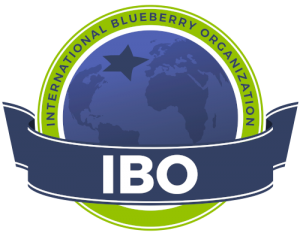The South African blueberry industry is expecting a sharp uptick in annual production and export growth this season.
Industry projections compiled by the South African Berry Producers Association (SABPA) puts production at around 17,000 metric tons (MT).
If achieved, that figure would mark a year-on-year growth of 45% from last year's 11,700MT - and almost double 2017's figure.
Exports typically account for 70% of the crop, and should therefore be close to 14,000MT this season. Last season South Africa exported around 8,000MT of blueberries.
In 2018 South Africa was the world's twelfth-largest blueberry exporter, according to International Trade Center (ITC) data. Its export growth has been explosive over the last few years, having risen from just 1,558MT in 2014 and 634MT in 2008.
And the industry is showing no signs of slowing down.
According to Elzette Schutte, operations manager at SABPA, the industry is forecasting production to reach 50,000MT in five years.
If the export share remains at around 70%, that production figure would mean exports of 35,000MT. Based on 2018 ITC data, South Africa would therefore reach a level on par with the Netherlands and the U.S., which are currently the fifth- and sixth-largest exporters.
There are currently around 2,700 hectares planted in the country, and that figure is expected to grow to 4,800 in five years.
Future South African blueberry growth dependent on new market access
According to a recent economic impact study of the industry, compiled by the Western Cape Department of Agriculture in collaboration with the SABPA, the South African blueberry industry is one of the fastest-growing horticultural industries in the country.
The July report found the sector had created more than 4,000 jobs in the last five years.
It also noted that the industry's future growth is dependent on having access to new markets, in particular China and South Korea.
But despite the limited access to these two markets compared to major Southern Hemisphere competitors such as Peru and Chile, the South African blueberry industry has managed to diversify its export market basket.
Industry expecting good season
The industry typically starts harvesting for the local market in the northern regions around late June, according to Schutte. Volumes normally peak around the spring months.
A representative of United Exports - one of the three major blueberry exporters in South Africa - said he is expecting a good season this year.
The company's CEO Jon Salters said conditions have been favorable across the different growing regions. Good rains over recent months have provided relief to fruit operations in the Western Cape, while there have been a good number of chill hours further north in the country.
"We're expecting a good season," he said. "The demand's there for good quality fruit, and specifically new varieties which OZblu offers.
"Growing conditions have been great - we've had no major issues. The weather has been kind to us, with enough cold weather and lots of rain in the Western Cape."
The U.K. remains South Africa's leading blueberry market, followed by Europe. But Salters explained that the Asian and Middle Eastern regions were seeing good growth. Although the South African industry doesn't yet have access to the Chinese market, it is hopeful that will be attained in the coming years.
United Exports - which is a shareholder in the OZBlu blueberry breeding program - is seeing double-digit growth in plantings in the country, amid expectations for a bright future for the South African blueberry industry.
"Compared to Latin American countries like Chile, Peru and Mexico, we're tiny but we're very excited and we think there's a huge opportunity," he said.
"In terms of growth potential, I think it's massive. We've got a lot to offer the country, and we're very positive about it."
05/08/2019

